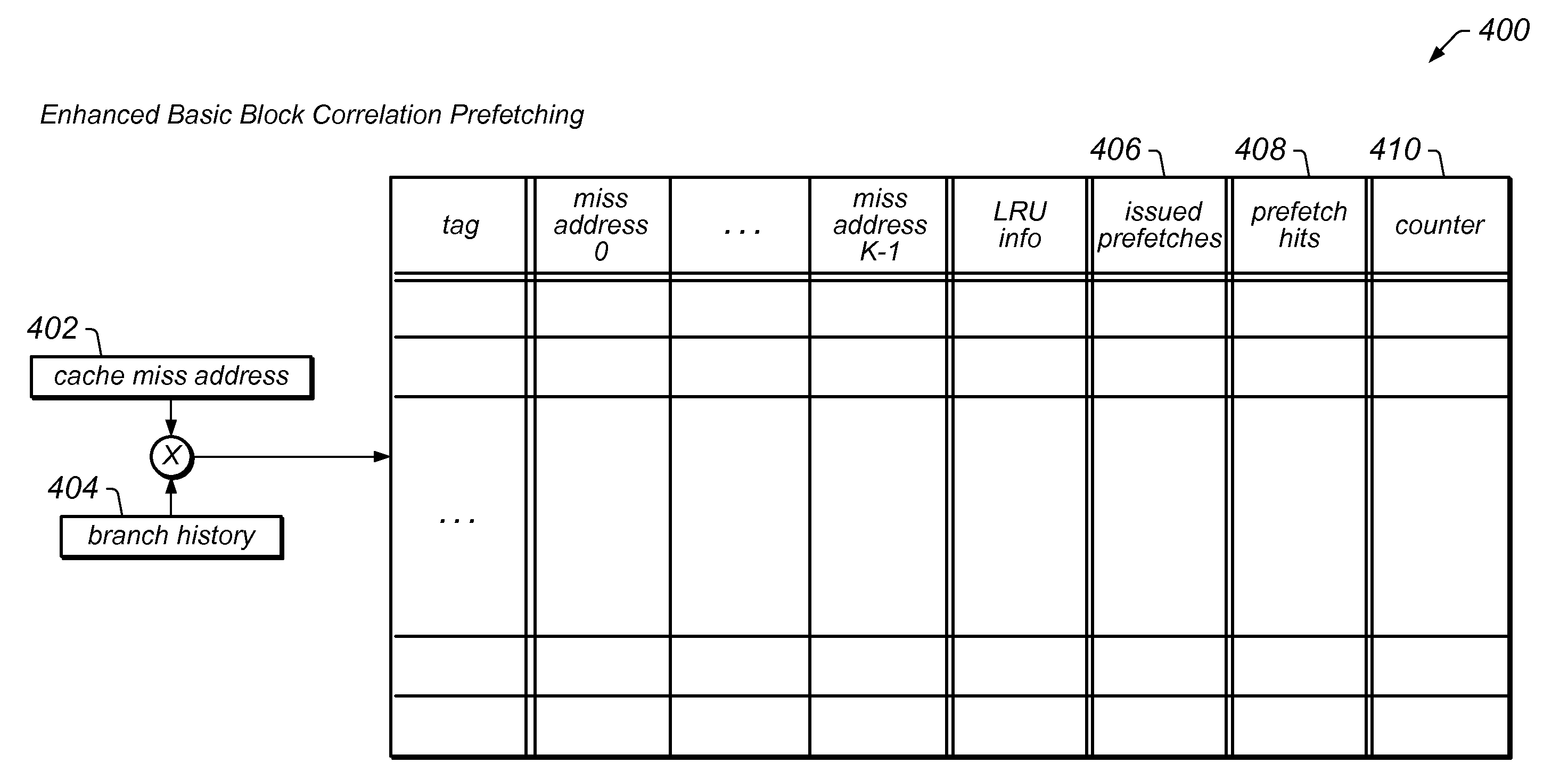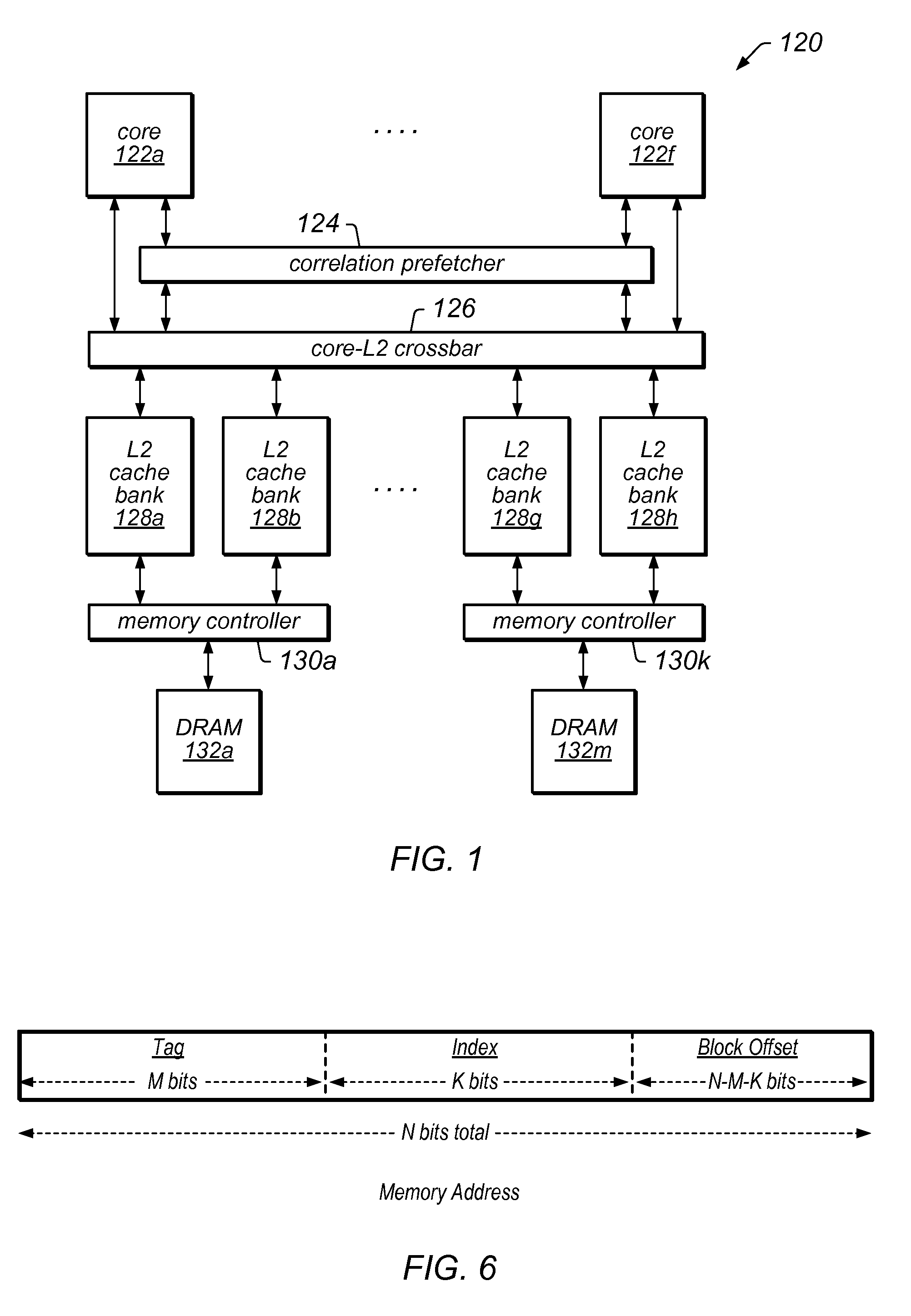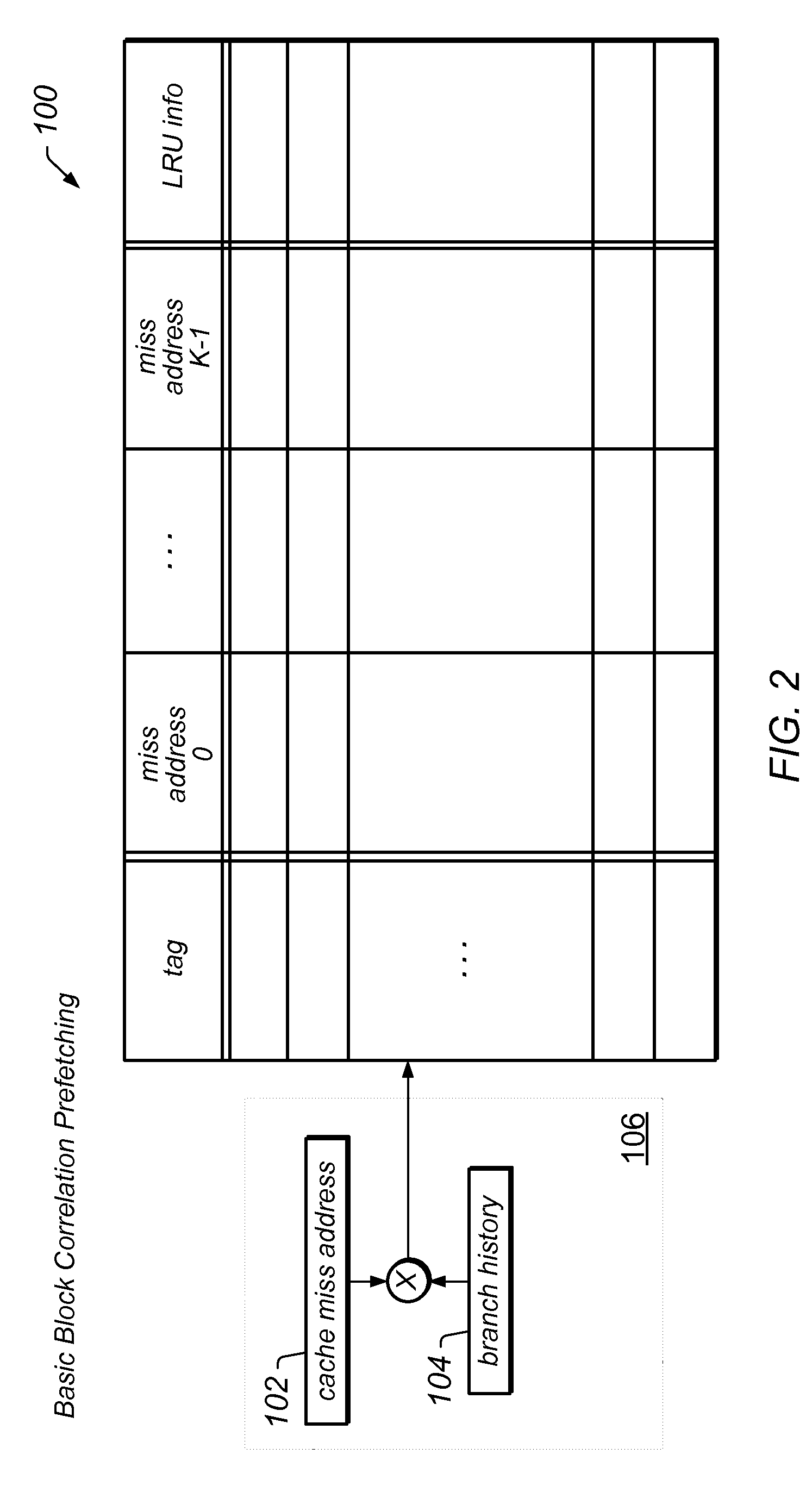Accuracy of correlation prefetching via block correlation and adaptive prefetch degree selection
a correlation prefetcher and degree selection technology, applied in the field of cache design, can solve the problems of increasing the difficulty of optimizing system performance, increasing the overhead, and incurred benefits, and achieve the effect of accurate correlation prefetcher design according to the principles and suitable implementation
- Summary
- Abstract
- Description
- Claims
- Application Information
AI Technical Summary
Benefits of technology
Problems solved by technology
Method used
Image
Examples
Embodiment Construction
[0032]The expressions “cache miss” and “cache hit” are used herein according to their well-established and accepted meaning by those skilled in the art, as also previously described. Accordingly, an “instruction miss” refers to a cache miss when attempting to retrieve an instruction(s) from main memory, a “load miss” refers to a cache miss when attempting to retrieve data from main memory, and a “store miss” refers to a cache miss when attempting to store data in main memory.
[0033]When handling a request targeting a memory address in main memory, the targeted memory address may be divided into three segments for referencing a cache line. As shown in FIG. 6, a memory address comprising N bits (where N is a positive integer) may be divided into a tag, an index address, and a block offset. As shown, the tag may correspond to the M most significant bits (MSB) of the memory address, the index address may correspond to the next K bits (from the last bit in the tag) of the memory address, ...
PUM
 Login to View More
Login to View More Abstract
Description
Claims
Application Information
 Login to View More
Login to View More - R&D
- Intellectual Property
- Life Sciences
- Materials
- Tech Scout
- Unparalleled Data Quality
- Higher Quality Content
- 60% Fewer Hallucinations
Browse by: Latest US Patents, China's latest patents, Technical Efficacy Thesaurus, Application Domain, Technology Topic, Popular Technical Reports.
© 2025 PatSnap. All rights reserved.Legal|Privacy policy|Modern Slavery Act Transparency Statement|Sitemap|About US| Contact US: help@patsnap.com



